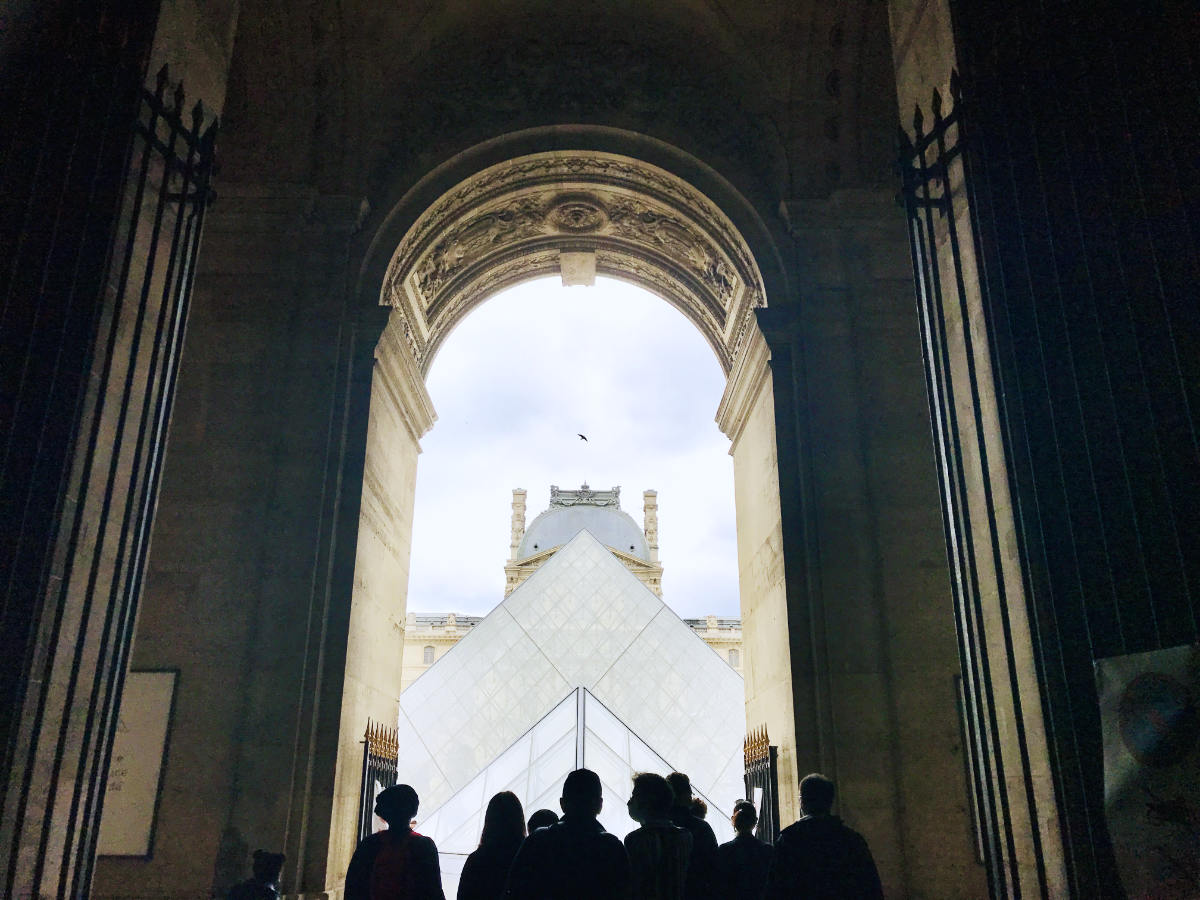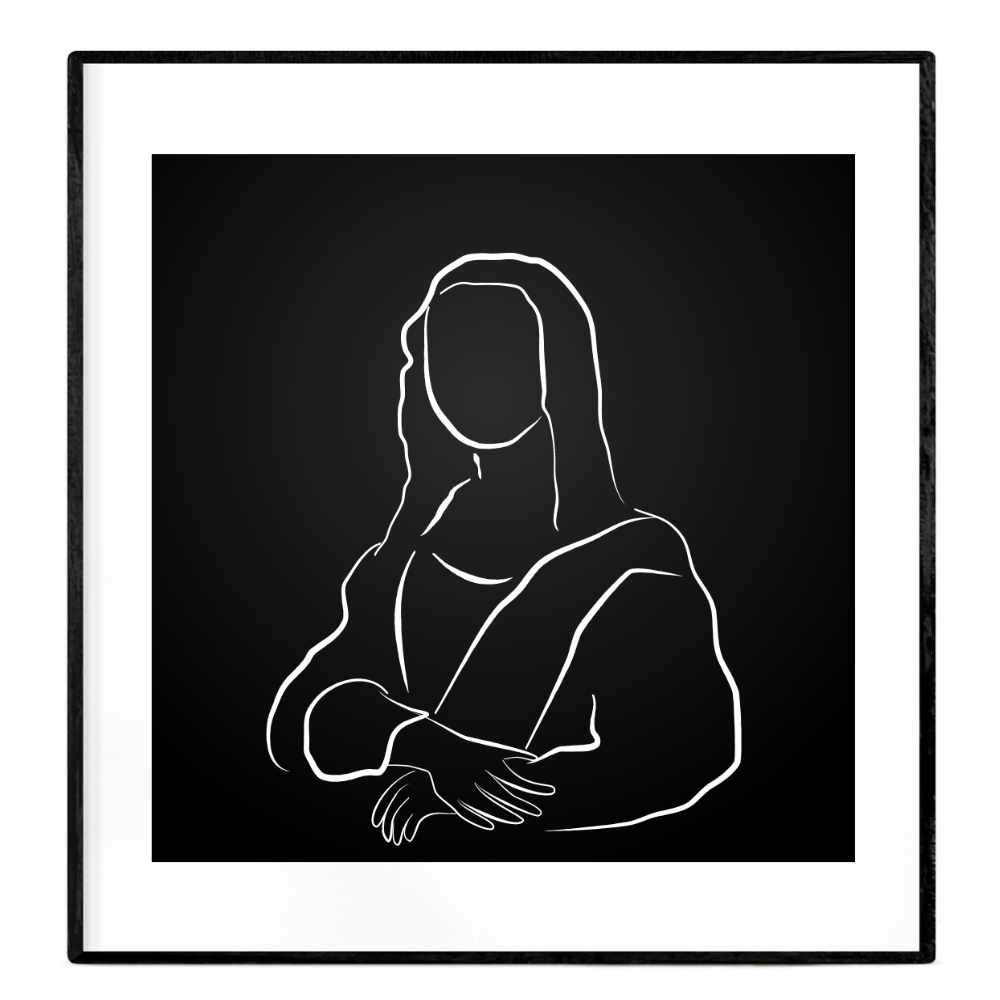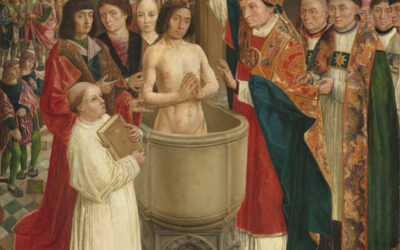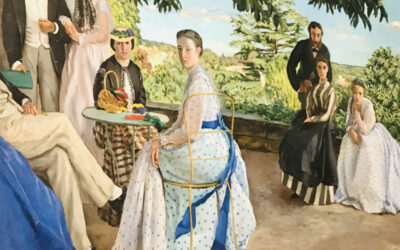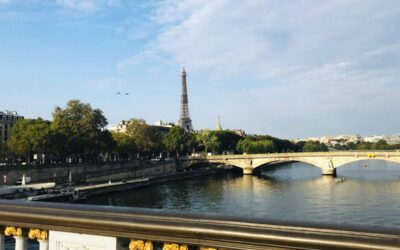The history of the Louvre in Paris is a long and fascinating one. Today it is home to a wide range of art collections spanning thousands of years. Almost as interesting as the works it holds, is the history of the building itself. And how it ended collecting one of the finest collections of artworks in the world.
One of the most visited museums in Paris and the world, the Louvre started out as an ancient fortress. Transformed into a royal palace, it was then given a new lease on life as a museum, becoming a monument to French history that is much-loved by locals and visitors alike.
If you read Dan Brown’s Da Vinci code, you would think that there is a Mary Magdalene hidden grave somewhere in the Louvre, under a glass pyramid. No need for fiction however, the real history of this building is just as interesting. (You can see what is purported to be her tomb in Saint-Maximin-la-Sainte-Baume in Provence, instead.)
The Louvre is said to hold over 35,000 pieces of art, with less than 10% of its famous works on display. We explore this incredible cultural icon, just how it managed to amass such a collection, and the twists and turns of history that turned it from a royal home to a building for the people. Allons-y!
- 1. The Construction
- 2. François I and Leonardo da Vinci
- 3. Henri IV (of Navarre) and the St. Bartholomew's Day massacre
- 4. Sun King Louis XIV's Move to Versailles
- 5. The Louvre in decline
- 6. Becoming a museum
- 7. Napoleon Bonaparte's oeuvres d'art at the Louvre
- 8. Returning the artwork and rebuilding the collection
- 9. Napoleon III's reconstruction
- 10. Burning down the attached Palais des Tuileries
- 11. Evacuating the Louvre during WWI and WWII
- 12. Building the Glass Pyramids
- 13. The Louvre Today
1. The Construction
The fortress that became the Château du Louvre was initially built in 1190 French King Louis Auguste.
Its location on the Right bank of the Seine river was across from the older part of Paris, which was formerly called Lutece (today Ile de la Cité and the Latin quarter in the 5th arrondissement).
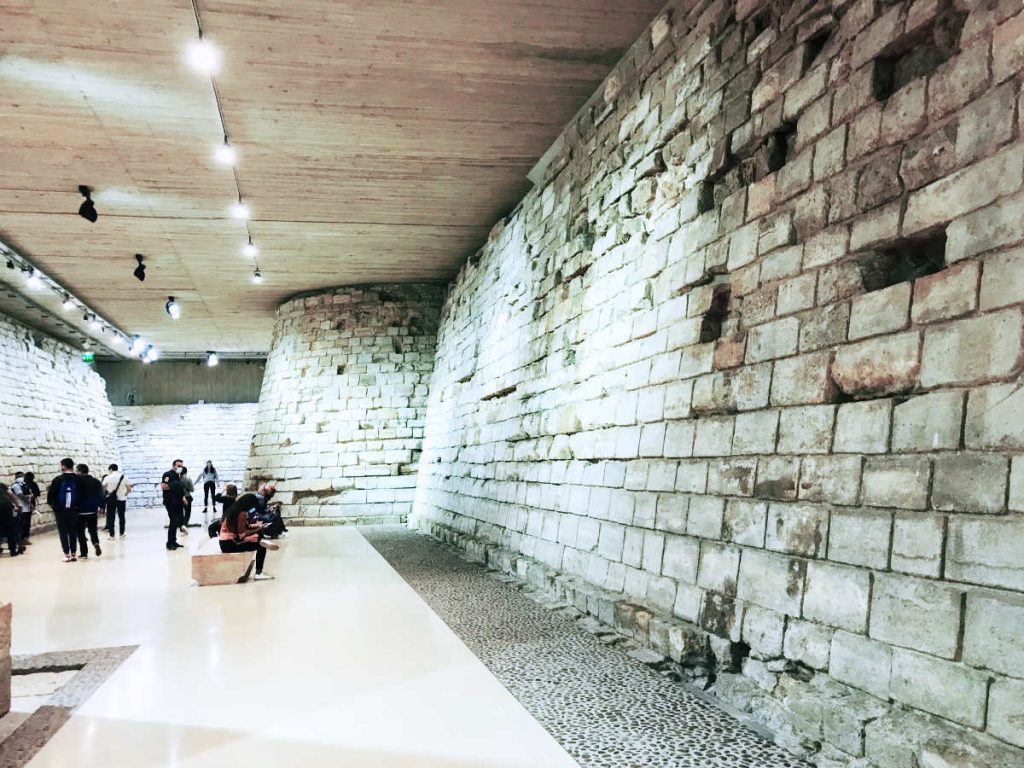
It is not the oldest palace in Paris, however, that honor belongs to the Palais de la Cité, better known as the Conciergerie on Ile de la Cité.
The new fortress of the Louvre on the Right bank of the Seine was intended to defend the wholesale food market Les Halles that was supplying the city against one of the traditional routes taken during invasions and raids since the time of the Vikings.
In the center was a large tower, known as the Grosse Tour du Louvre, protected by a series of outer walls and towers. In addition, it was protected by a large moat 10m wide, that were filled with water from the Seine. It is entirely unclear where the name “Louvre” came from.
Subsequent kings during the Middle ages would expand the fortress, using the Louvre as a royal residence, a prison, a place for keeping the treasury, and even for a library.
You can still see a portion of these old walls in the Sully Wing of the Louvre Museum.

2. François I and Leonardo da Vinci
In 1528, French King François I brought down the Grosse Tour du Louvre in his push to bring the Louvre up to Renaissance standards. He made the Louvre his royal residence in Paris, although the Château de Fontainebleau outside of Paris remained his favorite abode.
He ordered a large scale renovation in the Italian renaissance style, with ceremonial rooms, ballrooms, royal apartments and more. He also started to acquire artworks from across the continent, and with it, famous artists.
He offers to host Leonardo da Vinci, giving him a stipend and lodging at Clos Luce near his childhood home in Amboise. Da Vinci moved to France at the age of 64, arriving with chests full of notes and sketchbooks, along with 3 of his most famous paintings, the Mona Lisa, Virgin and Child with St. Anne, and St. John the Baptist.
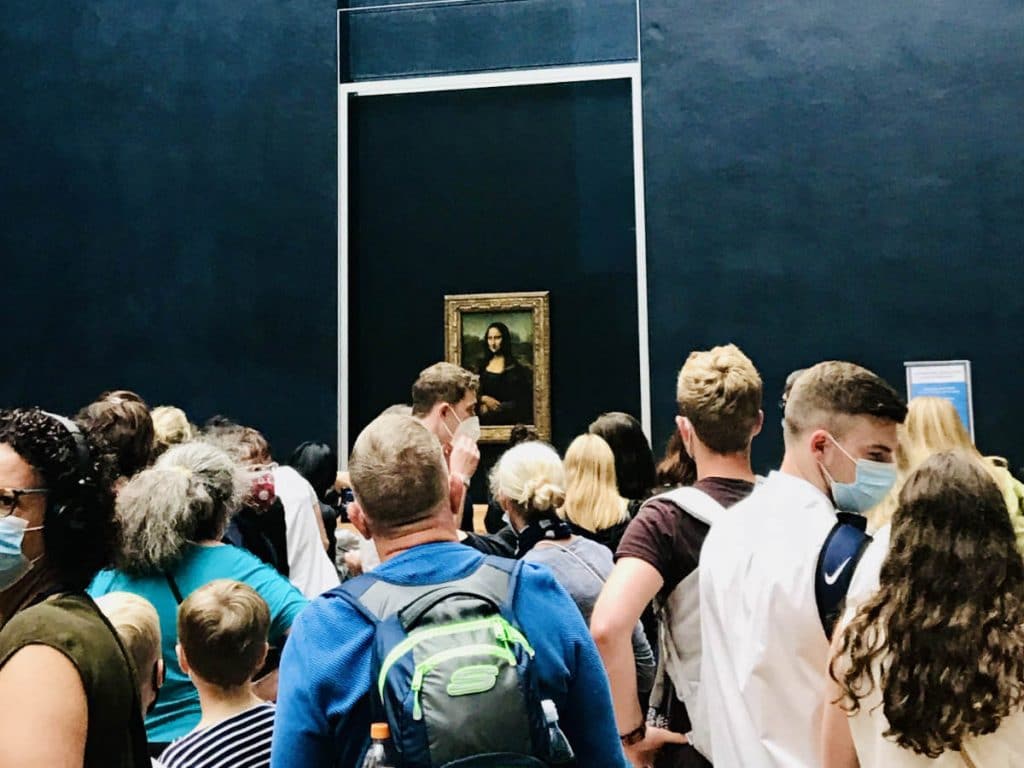
After Da Vinci died, many of his possessions became property of the royal family, which is how they ended up staying in France and on display at the Louvre Museum.
After François I’s son (Henri II) died, his wife Catherine de Medici became one of the most powerful women in France. She continued construction at the Louvre, as well as starting construction at a new palace right next to the Louvre, the Palais des Tuileries.
3. Henri IV (of Navarre) and the St. Bartholomew’s Day massacre
At the time, tensions were high between Protestants and Catholics. The youngest daughter of Queen Catherine, Marguerite of Valois, is married off to Henri of Navarre, in an effort to heal the tensions. It would have the opposite effect.
Henri is protestant, and marrying Catholic Marguerite would lead to one of the most brutal massacres in French history, which takes place directly outside the Louvre Palace a couple of days their wedding.
With the bride and groom staying at the Palais du Louvre, both Protestants Huguenots and Catholics had descended on Paris to be present at the marriage.

Alarmed that Protestant Henri was now in line to the throne of France, they would turn on Huguenots gathered, encouraged by Catholic Catherine. By some historians’s estimates, the number of dead across France vary from 10,000 to 30,000 people.
Henri of Navarre would go on to convert to Catholicism to try to maintain the peace after becoming King Henri IV. His famous words were “Paris is well worth a mass.” He would continue to expand the Palais du Louvre and the Palais des Tuileries, with the intention of connecting the two.
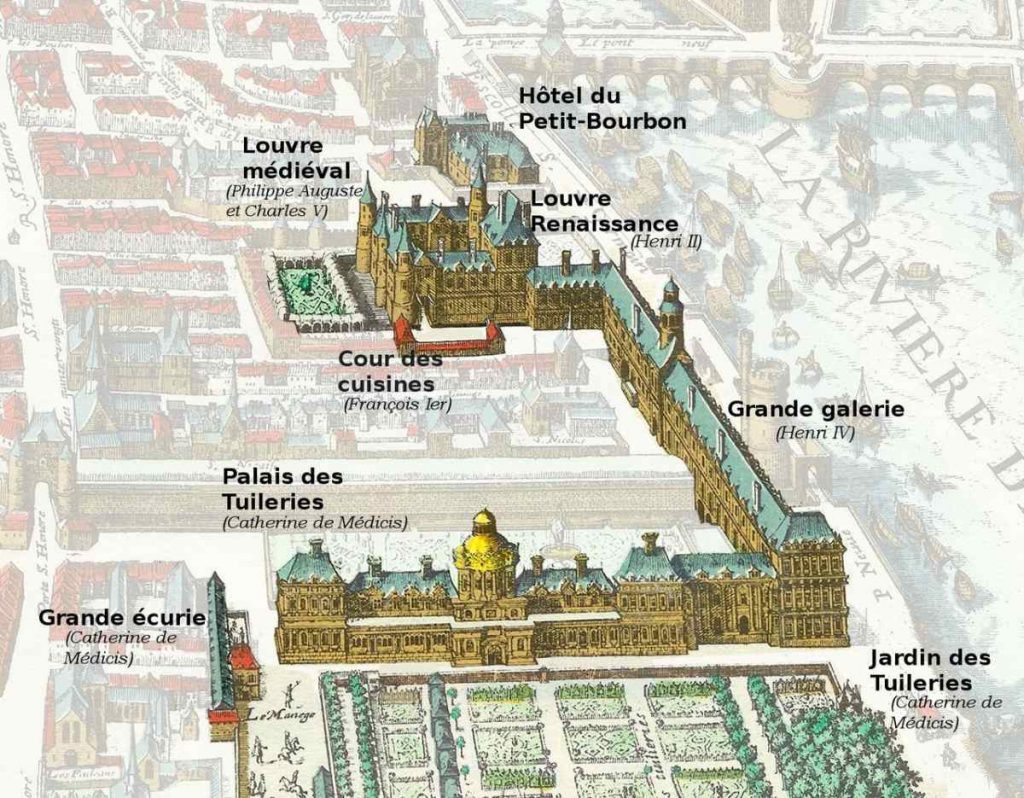
4. Sun King Louis XIV’s Move to Versailles
When Sun King Louis XIV ascended to the throne, he was merely 4 years old. It was a tumultuous time known as the Fronde, with nobles at the time contesting his mother Anne, who was Regent. At one point, the 12-year old Louis and his mother were held prisoner at Palais Royal in Paris (the palace next to the Louvre) until they conceded to the demands of the frondeurs.
This made Louis detest and distrust Paris. But he nonetheless, moved into the Louvre Palace as an adult and started making more renovations. He built the Cour Carré, the smaller courtyard at the back of the Louvre today, as well as the Louvre Colonade, the eastern front of the Louvre.
He did however start looking for a new power base, and settled on the family’s old hunting lodge: Versailles which was a couple of hours away from Paris by horse.
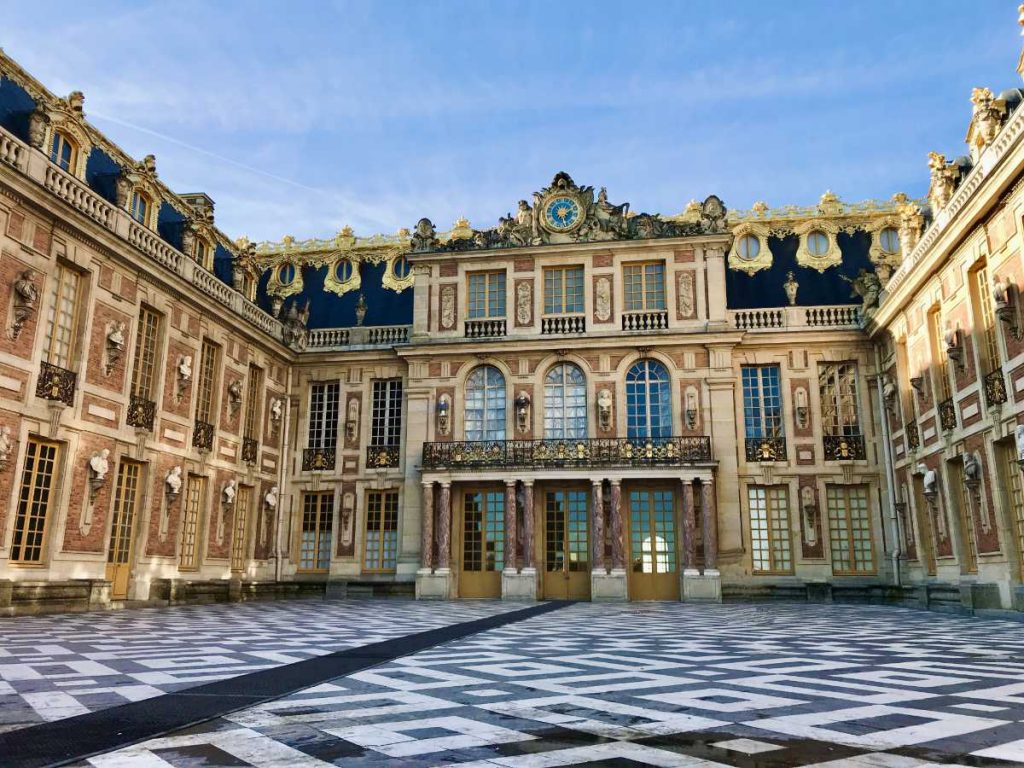
Louis XIV set about on a grand construction project to build what we know today as the Palace of Versailles. By the 1670s, Louis XIV directed all his construction budget from the Louvre to the Château de Versailles.
5. The Louvre in decline
With Louis XIV and his descendants preferring to make Versailles their home, and the executive power located at the Palais des Tuileries, the Louvre was taken over by artists, craftsmen, royal academies, and various royal officers.
The Mona Lisa was not at the Louvre, but instead at the Palace of Fontainebleau (aka the Home of Kings). And when it was moved, Louis XIV, husband of Marie-Antoinette, moved it to the Palace of Versailles.
6. Becoming a museum
It would take a revolution for the Louvre Palace to find a new purpose. In 1789, the King, Marie-Antoinette and court were forced to return from Versailles and were in Tuileries Palace while many courtiers moved into the Louvre.
After the fall of the monarchy many artworks including the Mona Lisa became property of the French Republic and went on permanent display at the Louvre, while artists moved into the Louvre apartments that were newly vacated.
In May 1791, the Assemblée Nationale declared that the Louvre was officially a museum and “a place for bringing together monuments of all the sciences and arts”.
It was known as the Muséum central des arts de la République, and was open to the public 3 days a week for free, displaying around 537 paintings and 184 objects of art. That relatively small collection would soon increase significantly.
7. Napoleon Bonaparte’s oeuvres d’art at the Louvre
When Napoleon Bonaparte took power and declared himself Emperor in 1804, he had the museum renamed Musée Napoléon.
He himself did not live at the Louvre, preferring Château Malmaison, Fontainebleue, and later Palais de l’Elysée.

He did however set off pillaging various artworks across Europe, bringing them back to the Louvre. Acquisitions were made of Spanish, Austrian, Dutch, and Italian works, either as the result of war looting or formalized by treaties.
For example, one of his peace treaties compelled Italian cities to contribute pieces of art and heritage to Napoleon’s “parades of spoils”. These items were then placed the Louvre Museum.
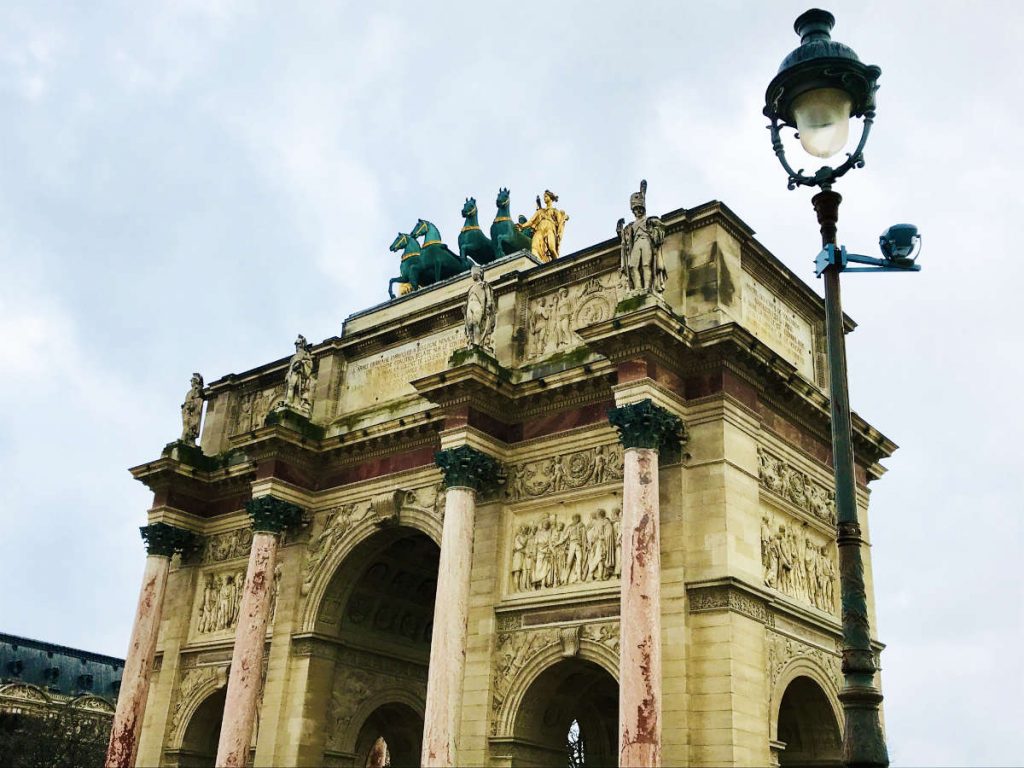
As well as redecorating and renovating the interior, he also built the Arc de Triomphe du Carrousel that stands in front of the Louvre to commemorate Napoleon’s military victories, as well as the “other” Arc de Triomphe on the Champs Elysées.
Napoleon also had a new wing built, between 1807 and 1815, which closed the courtyard of the Carrousel to the north, and which extended along rue de Rivoli.
8. Returning the artwork and rebuilding the collection
After Napoleon Bonaparte’s defeat at the Battle of Waterloo, many of the countries he had previously conquered asked for their artwork back.
For example, the Horses of Saint Mark, which had adorned the basilica of San Marco in Venice since the sack of Constantinople in 1204, had been brought to Paris where they were placed atop Napoleon’s Arc de Triomphe du Carrousel.
These were returned to Italy, after much consternation from the directors of the Louvre, and today there is a copy on top instead. Artworks were traded back and forth with much haggling between the parties.
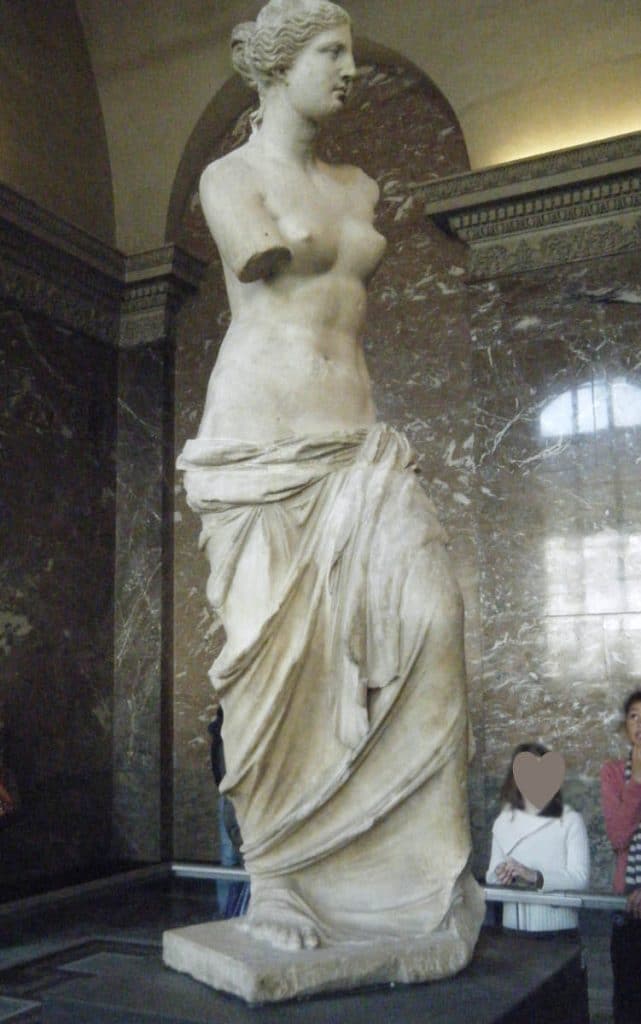
One interesting example is the famed Venus de Milo, who dates back to the 1st century BC, Cyclades, Greece. It was acquired by the French ambassador in Constantinople through rather questionable bargaining, and offered to the restored Bourbon King Louis XVIII in 1821.
However in 1815, France had returned a similarly named Venus de’ Medici (also known as the Medici Venus) to the Italy, along with several other works.
In an effort to continue promoting the prestige of the Louvre, the French put forth that it was Venus de Milo that was more beautiful and a greater treasure, promoting her worldwide to the symbol of beauty what she is today.
9. Napoleon III’s reconstruction
With several wars with Prussia and England in the 19th century, the Louvre was not a priority.
When Napoleon III (nephew of Napoleon Bonaparte) lands on the French throne, he decides to renovate much of Paris, with his new Hausmannian buildings, as well as the Louvre.
The wings of the buildings around the Cours Napoleon where the glass pyramid entrance stands today, were actually substantially built and renovated in the 1850s by Emperor Napoleon III for his Minister of State.
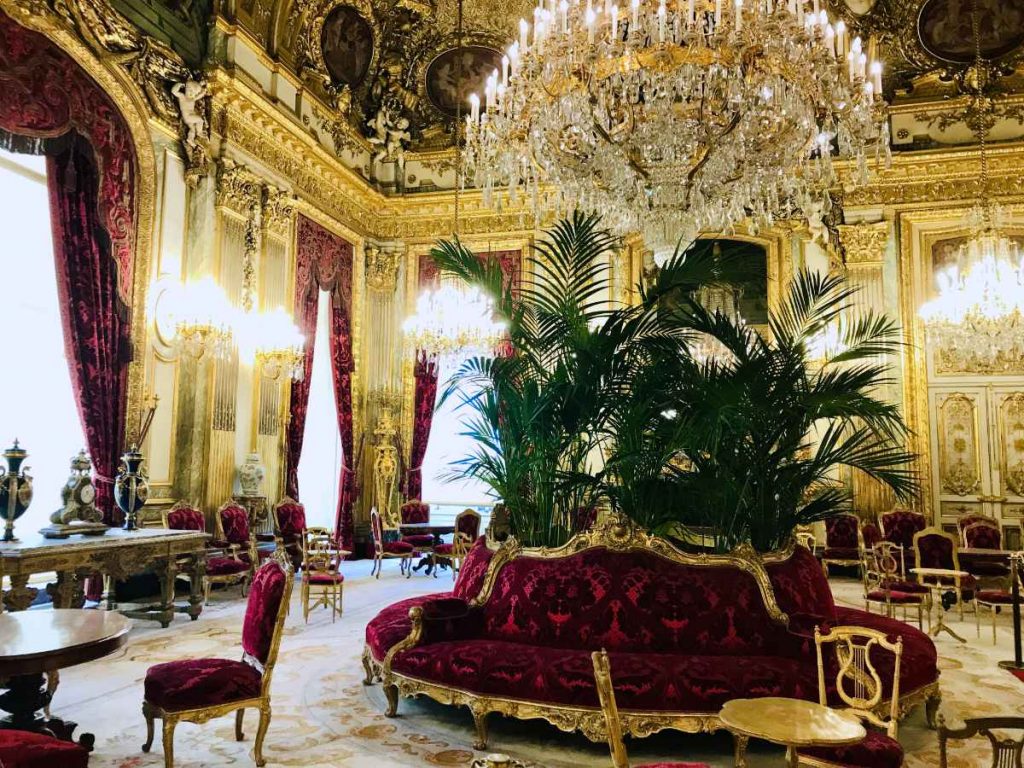
Napoleon III himself, lived in the Tuileries Palace that used to be right next door. He had intended to fully connect to the two palaces into one, though that never happened.
After the fall of Napoleon III, much of the Louvre was reconverted back into a museum. But these state apartments including a grand dining hall, and salons with their crystal chandeliers, ornate gold, and velvet decorations remained.
It continued to house the Ministry of Finance, however, in the Napoleon III State apartments as recently as 1989. (In case you are wondering, the French Ministry of Finance is now in an ugly modern building on the Seine called Bercy in the 12th arrondissement.)
10. Burning down the attached Palais des Tuileries
Like his uncle Napoleon Bonaparte, Emperor Napoleon III also was defeated and dethroned after a battle in 1870, this time against the Prussians (Germans). He was exiled to England, leaving France in turmoil.
His former home, the Tuileries Palace that was attached to the Louvre, was burnt down during the Paris Commune protests in 1871. The emperor’s Louvre library (Bibliothèque du Louvre) and some of the adjoining halls, in what is now the Richelieu Wing, were separately destroyed.
The Tuileries were never rebuilt, but the Louvre museum was saved by the efforts of Paris firemen and museum employees led its curator Henry Barbet de Jouy.
11. Evacuating the Louvre during WWI and WWII
The Louvre was closed as a museum in 1914, during the outbreak of World War I, given the destruction of other major monuments like the historic Reims Cathedral that was subject to bombardments.
Many of its most important works were moved to Toulouse during the First World War. They would face a greater test in World War II.
With Paris under occupation by the Germans (which was not the case during WWI), and Hitler and his cronies confiscating artworks all over Europe, it was only the cleverness of its museum directors that the Louvre’s greatest treasures were saved.
Starting September 27, 1938, a few months before the war, convoys of art would leave the Louvre to be hidden in châteaux and houses across France.
Over 3,600 paintings were taken down and move to places like the Château de Chambord, Valençay, Louvigny, Pau, etc. Over 200 trips take place with 5,446 boxes are moved including the Winged Victory, Mona Lisa and many many more.
The disappointed Germans would find many of the walls of the Louvre empty, moving items like the Bayeux Tapestry to the Louvre instead.
12. Building the Glass Pyramids
In the 1980s, French president François Mitterrand decided that the French Ministry of Finance, which was still in the Louvre at the time, needed to move. The entire space was to become a museum.
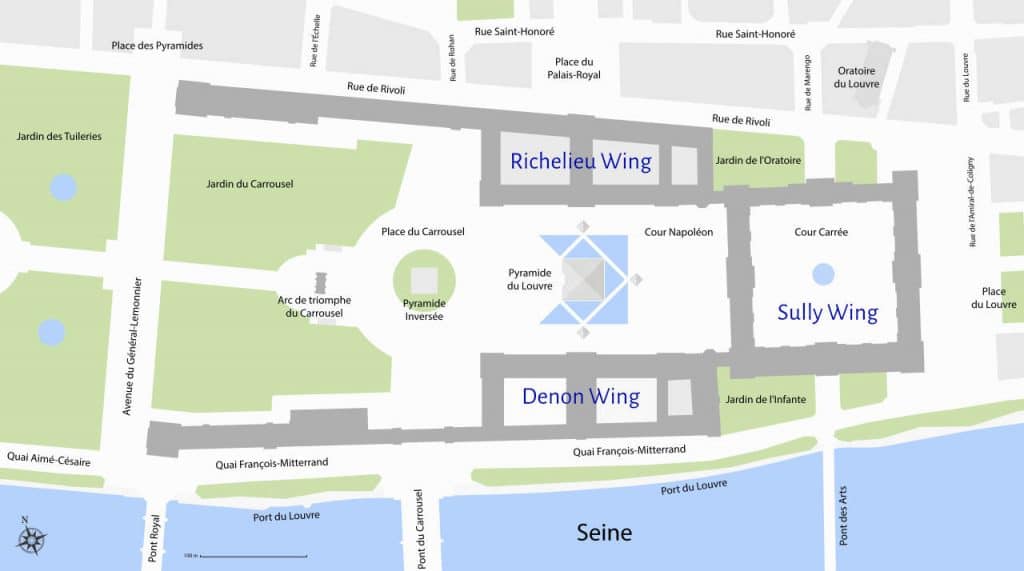
In 1984, he selected I. M. Pei, a renowned architect to substantially renovate the space, including an underground entrance accessed through a glass pyramid in the Louvre’s central Cour Napoléon.
Parisians initially hated the idea of this modern pyramid in the middle of the ancient palace, but the work was completed anyway in 1993. In a few short years, however, the Louvre Museum would become the most visited museum in the world.
13. The Louvre Today
The Louvre museum is built right on the Seine, and along with other historic buildings like the Notre Dame de Paris, benefits from special precautions in case of flooding.
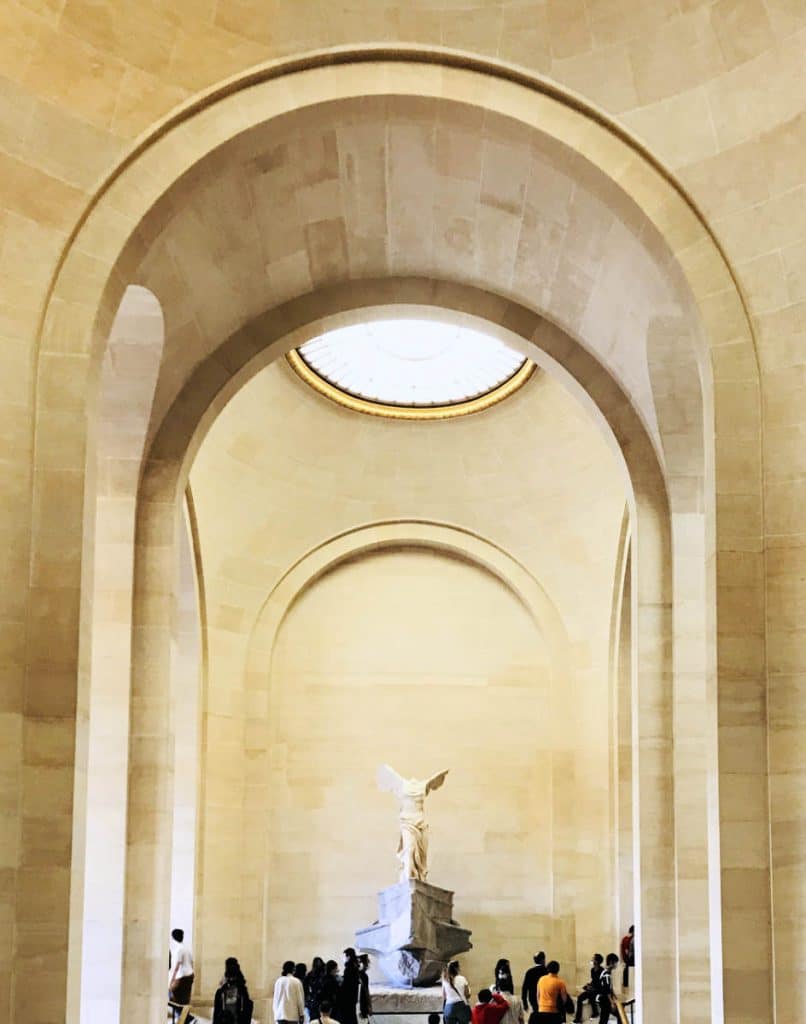
There is still controversy however, with foreign authorities like the Greek government asking for works like the Winged Victory to be returned, while French authorities insist the works would not have survived had they not been in the Louvre.
Whatever the case maybe, the Lourve continues to flourish, attracting millions of visitors every year, as a monument to art and culture.

If you enjoyed reading that article, you may want to read more about what not to miss when visiting the Louvre.
A bientôt!
